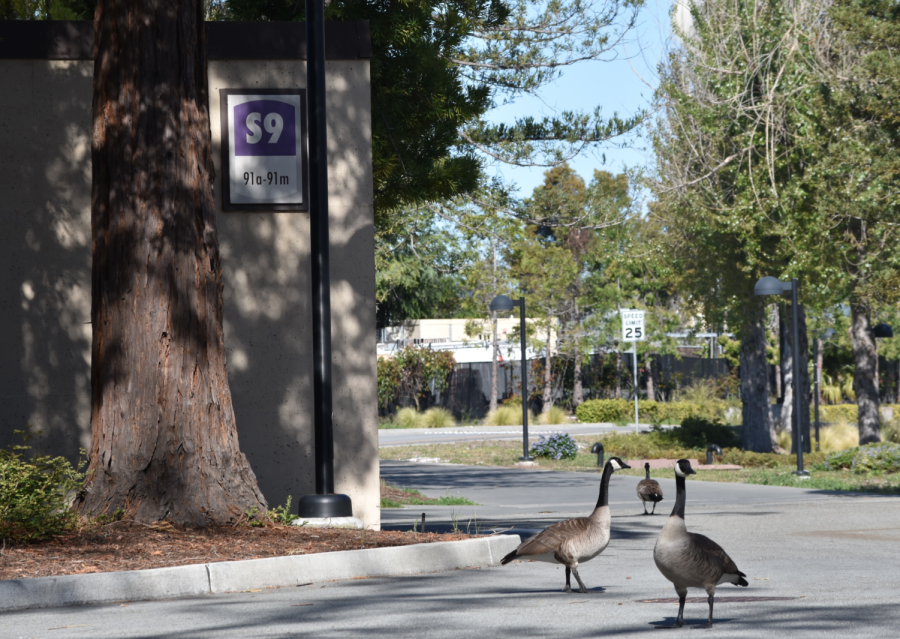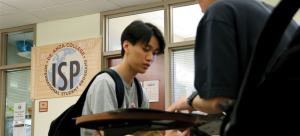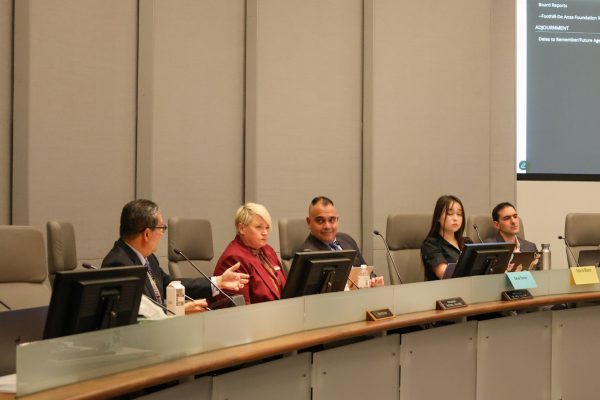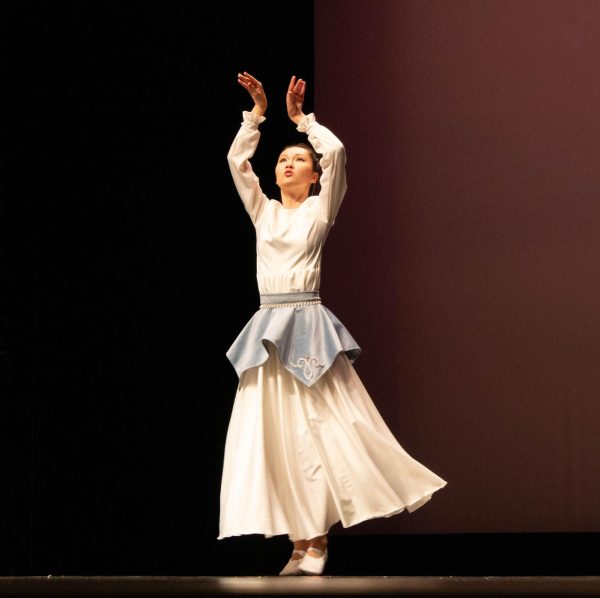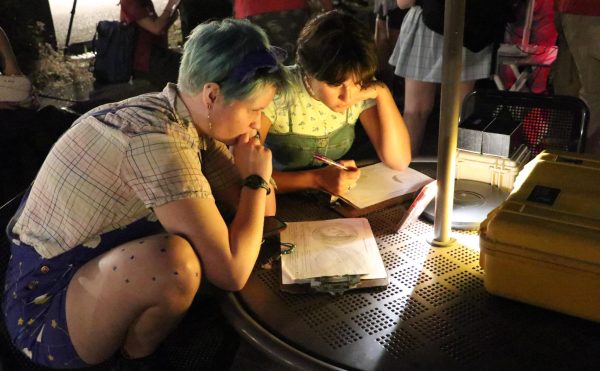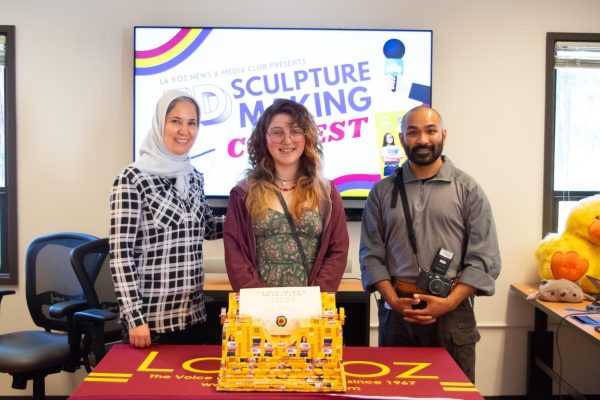Seasonal students: An exploration of urban wildlife on campus
Three Canada geese patrol the area in front of the S9 building at De Anza College on April 22.
April 29, 2023
Spring has returned, and so have many of De Anza College’s animal residents! Meet some of the most noteworthy critters on campus and discover what they do, where they’ve been, and how they contribute to our vibrant college community.
Mourning dove
If you ever hear, “hoo, hoo,” while on campus, it’s probably not an owl. Chances are, it’s a mourning dove (Zenaida macroura), whose sounds are sometimes mistaken as owl calls or wind whistling.

These birds communicate with one another using calls that resemble the sound of people crying, hence their name, and make twittering sounds when they flap their wings.
Their bulbous form is similar in size and shape to common pigeons, but they can be differentiated by their brown feathers with black spots.

At De Anza, they can be seen perching on tree branches, roofs, awnings, and even building their nests in nooks and crannies. The campus’ flourishing landscapes also serve as a convenient resource for mourning doves to forage for seeds on the ground, making it a popular destination for them in the springtime.
Canada goose
With thundering honks that echo across buildings, massive wingspans, and a lack of natural predators in the area, our resident Canada geese (Branta canadensis) are unafraid to walk nonchalantly among students and staff.

As the weather gets warmer, many geese flock to De Anza to snack on the greenery of the school’s lawns and landscapes, cool off in the fountains, and possibly terrorize people with their ominous presence. They don’t attend full-time, though; their schedules consist of flying to local parks or McClellan Ranch Preserve to rest every evening, and then returning to campus early in the morning.
Although they may seem intimidating, the Canada geese from our area usually won’t bite or hiss at people unprovoked, only resorting to these attacks when distressed. However, these geese may fight each other to defend their “turf” — especially in the spring, which is their nesting season.

Eastern gray squirrel
Out of the four common squirrel species of the San Francisco Bay Area, it seems that the eastern gray squirrel (Sciurus carolinensis) is the one that is the most well-suited for college life.

Although they become jumpy when people approach them, they have no problem adapting to populated human spaces – so long as there are things that they can climb, and sources of food.
Naturally, these squirrels eat local fruits, nuts, and seeds, but it’s not uncommon to see them popping in and out of trash cans to scavenge students’ discarded food.

They can also be found scurrying around every single corner of campus, digging holes to store their food in the dirt, and resting on tree branches during the warmer months. In harsh winter conditions, eastern gray squirrels do not hibernate, but instead spend the majority of their time in their nests located high up in trees.
Western fence lizard
Blink and you’ll miss it, the western fence lizard (Sceloporus occidentalis) is well camouflaged, tiny in size, and fast moving. What is most unique about these creatures is their ability to detach their own tails when threatened and then grow them back.

Lizards are cold blooded, which means that they cannot adequately produce their own metabolic heat to carry out bodily functions. As a result, western fence lizards spend most of their day sitting in the sun when the weather is warm. When it is cold, they enter a state of brumation, which is similar to hibernation.
As they bask in spots of sunshine, western fence lizards can autonomously lighten or darken their scales to more efficiently absorb or distribute heat.

They mainly reside in bushes, trees, and patches of vegetation where they hunt for insects and spiders. However, you’re more likely to spot them while they sunbathe on concrete or cement surfaces on campus, where their neutral colored scales stand out against the dark surfaces.
Campus wildlife and the community
These animals, along with many others, bring a sense of excitement, ambiance, and curiosity to De Anza’s campus life.
Kim Truong, 19, psychology major, finds enjoyment in encountering De Anza’s urban wildlife.
“I think it’s really cute, running into them,” she said.
Truong once recreated a trend from social media site TikTok, in which people try to get squirrels to walk towards them by making a wave motion with their hand, while she was on campus.
“It didn’t (work), the squirrel just went up (a tree)!” she said.
Library technician Sandy Cardoza has become familiar with the cycles of wildlife coming and going throughout her time working at De Anza, saying she looks forward to seeing baby geese following their parents on campus every late spring. Cardoza also voiced her empathy for the urban wildlife population, having noticed a decline in their presence on campus over the past few years.
“(There are) lots of cute animals,” she said, “I feel for them because it’s gotta be hard out there.”
Even for Martin Gutierrez, 21, business major, who mostly takes online classes, the abundance of squirrels stood out to him when he attended class in person. Gutierrez expresses neutral feelings towards the squirrels, simply accepting their notable presence as a part of De Anza’s environment.
“I don’t really mind them, they’re not irritating or anything,” he said.
According to environmental science professor Joshua McCluskey, being around wildlife in general can be stimulating and have positive effects on one’s mentality.
“We are attracted to kinetics, things that are moving, that get our attention,” McCluskey said. “So when you’re on campus, in my opinion, if everything is sterile buildings and you don’t see anything move, it would be very boring. I think having these little guys here, moving around, enriches the area.”
He says that sharing a space with wild plants and animals is similar to participating in activities like hiking and visiting parks, which can increase mindfulness and help foster an appreciation for nature.
In response to concerns regarding the effects of prolonged human interactions on our campus wildlife, McCluskey remains reassuring.
“On campus, what we have is a long term urbanized area (so) these animals just become very tolerant of humans,” he said. “So it doesn’t necessarily affect them biologically, (…)they just urbanize with us.”
The wildlife on campus will still continue to play an important role for staff, students, and our broader community, regardless of people’s attitudes or opinions. As a result, being aware of and learning about these interactions can teach one a lot about the world around them.
“What we try to share in the (environmental science) department is that connection with nature,” McCluskey said. “We’re part of nature whether we urbanize ourselves–and hide–or not, so in many ways, it’s calming and enriching.”



